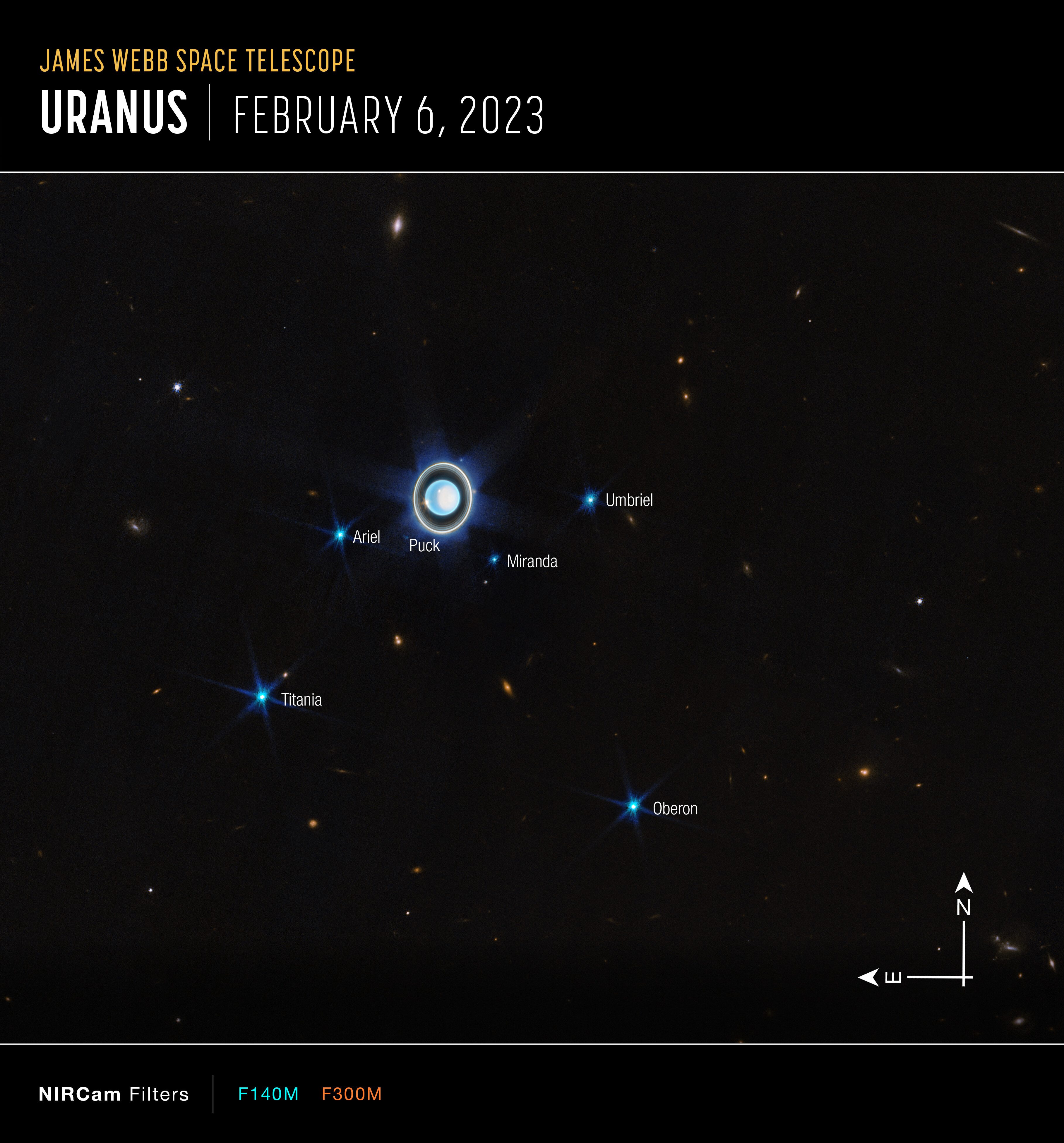Uranus is surrounded by a system of faint rings, but they are not easily spotted. Before today, only the Voyager 2 spacecraft during its flyby of the planet in 1986 and the Keck Observatory have been able to see them. Now, enter JWST, showing that the latest space telescope is more than up to the task of seeing these faint structures – and much more.
But let’s focus on the rings to start. JWST is seeing 11 of the 13 rings that Uranus is known to have. The issue for once is not that the missing two are too faint. Several of them are actually too bright for the space telescope, so they merge into a single feature. Nine of the rings visible are the main rings, while two are the diffuse dusty rings, like the faint orange structure closest to the planet.
Beyond the rings, there is the weather on the planet. If you have seen previous pictures of Uranus from Voyager 2, the planet appears like a smooth aquamarine sphere. But infrared reveals that trouble boils under its smooth surface. Two bright clouds are visible in the image, which are connected to storm activity inside the planet. One is near the planet’s limb and the other is located near the polar cap.
And let’s talk about the polar cap. That bright region you are seeing is the North pole of the planet. During the spring and summer, the area is in direct sunlight and this cap forms, before vanishing in the fall. We’ll let you consider that for a second… Yes, we are seeing the planet’s North pole but we are not “above” the planet. We can do that because Uranus is truly very weird. It orbits on its side, so during summer its North pole is pointing at the Sun, and during winter is its South pole points at the Sun.
The reason for this and the many other peculiarities of the planet is the enormous impact experienced by Uranus that is believed to have happened billions of years ago, messing with the planet’s axis, magnetic field, and internal temperature.

Uranus and its brightest moons. Image credit: NASA, ESA, CSA, STScI, Joseph DePasquale
The zoomed-out JWST image also shows most of Uranus’s 27 moons. While most are to small and faint to be seen in the image, the six brightest are very clear. And all of this comes from just a 12-minute exposure in just two filters.
Uranus is about to be studied in much better detail as JWST goes to look at it again and again. The telescope has also looked at Neptune, and the other giant planets in the Solar System.
Source Link: New Picture Of Uranus's Rings Is Nothing Short Of Magnificent